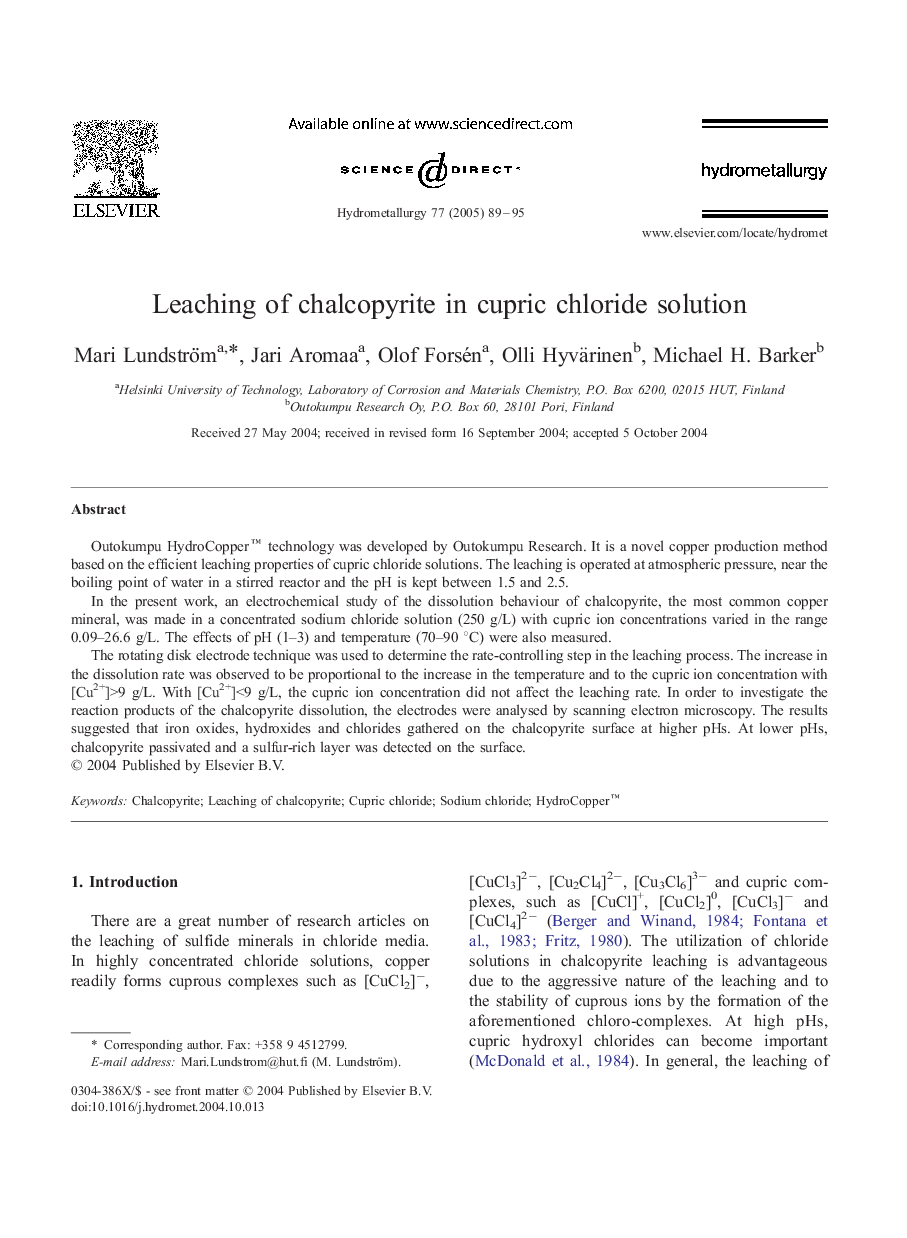| Article ID | Journal | Published Year | Pages | File Type |
|---|---|---|---|---|
| 9632599 | Hydrometallurgy | 2005 | 7 Pages |
Abstract
The rotating disk electrode technique was used to determine the rate-controlling step in the leaching process. The increase in the dissolution rate was observed to be proportional to the increase in the temperature and to the cupric ion concentration with [Cu2+]>9 g/L. With [Cu2+]<9 g/L, the cupric ion concentration did not affect the leaching rate. In order to investigate the reaction products of the chalcopyrite dissolution, the electrodes were analysed by scanning electron microscopy. The results suggested that iron oxides, hydroxides and chlorides gathered on the chalcopyrite surface at higher pHs. At lower pHs, chalcopyrite passivated and a sulfur-rich layer was detected on the surface.
Related Topics
Physical Sciences and Engineering
Chemical Engineering
Chemical Engineering (General)
Authors
Mari Lundström, Jari Aromaa, Olof Forsén, Olli Hyvärinen, Michael H. Barker,
